For
Mongolia, the corridor offers a vital opportunity to overcome its
landlocked status and develop its infrastructure, which is critical
for its economic growth and trade with its neighbours.
Recently a new China-Mongolia-Russia Economic Corridor flagship
project – the Power of Siberia 2 - has been launched. The Power of
Siberia 2 pipeline project complements the Power of Siberia 1
pipeline project that is designed to transports natural gas from the
Chayandinskoye field in eastern Siberia to China.
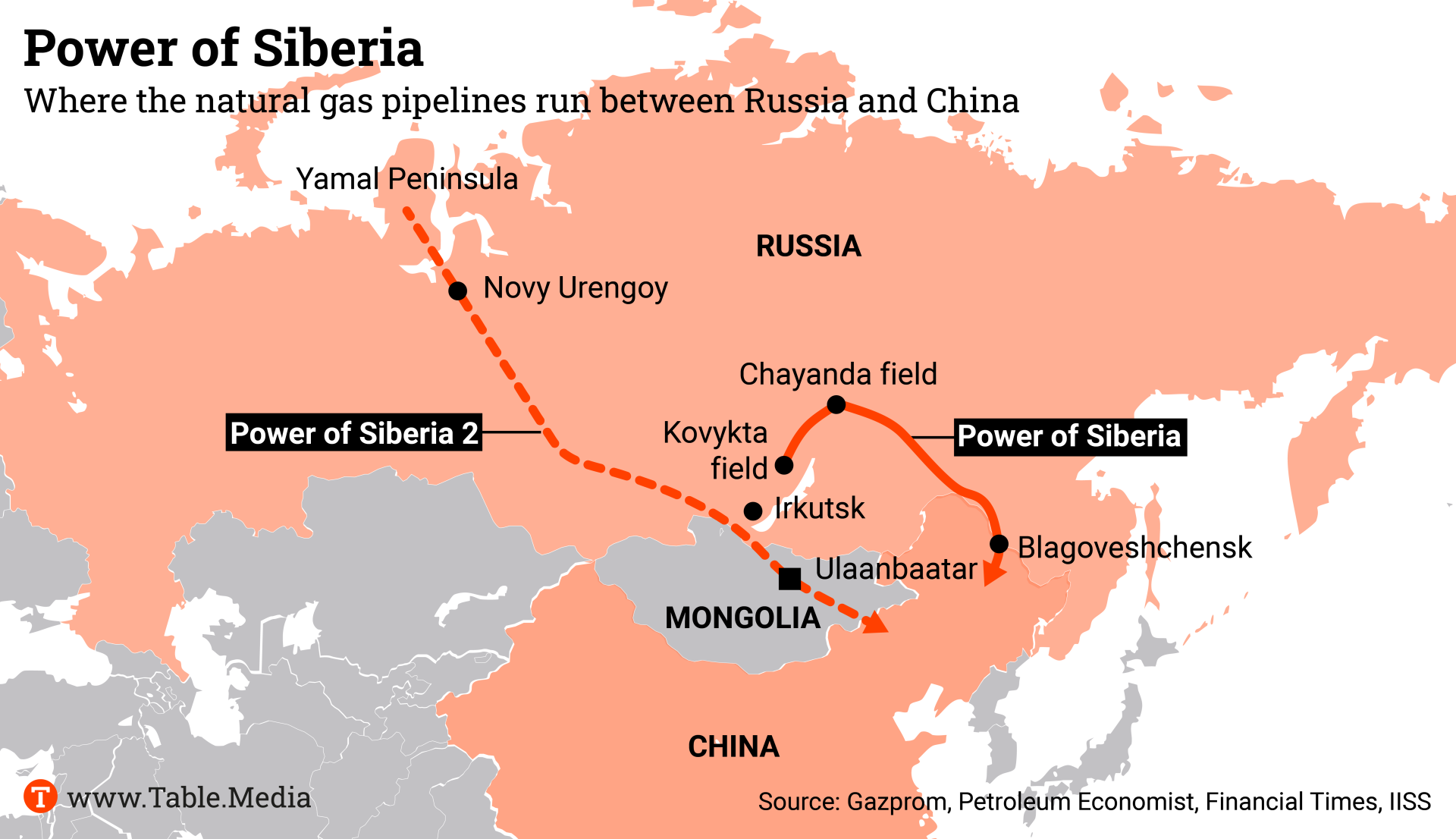
The
existing Power of Siberia 1 is a 30-year, $400 billion agreement and
the pipeline is considered to be near full capacity.
The
Power of Siberia 2 is currently in development and can be summarised
as the following:
Function:
Will transport gas from western Siberia's Yamal fields to China.
Capacity: Estimated at 50 billion cubic meters per year.
Route: Expected to run through Mongolia.
Significance: This project is seen as a strategic pivot for
Russia's energy exports, replacing sales lost to Europe and creating
a long-term, large-scale energy alliance with China.
Status: A preliminary agreement has been signed, but key
details like pricing, construction schedule, and final contracts are
still being negotiated.
New Eurasian Land Bridge (NELBEC)
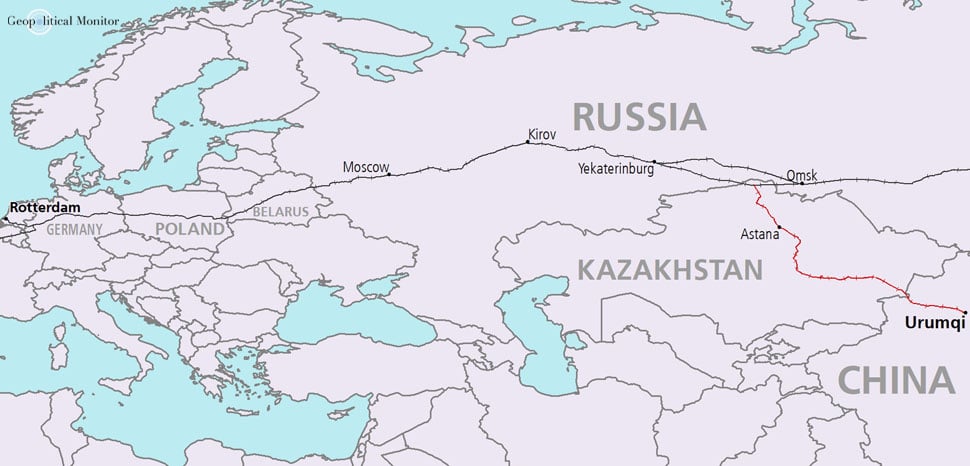
The
New Eurasian Land Bridge (NELBEC) is a rail freight corridor
connecting China and Europe through Central Asia, designed as a
faster alternative to sea freight. It runs from Chinese coastal
cities like Lianyungang, through Kazakhstan, to European hubs like
Rotterdam and Warsaw, and is a key component of China's
Belt and Road
Initiative. This land bridge is distinct from the
northern route (the first Eurasian Land Bridge) which primarily uses
the Trans-Siberian Railway through Russia.
Key
features
Route: The
main route extends from China's Pacific coast, through Kazakhstan
and Russia, and into Western Europe via Belarus and Poland.
Purpose: It aims to shorten transit times and distances
between Asia and Europe compared to traditional ocean shipping,
though it is more expensive than sea freight.
Initiative: It is supported by China's Belt and Road
Initiative and is sometimes called the Second Eurasian Continental
Bridge.
Modernization: The project includes modernizing rail
infrastructure and creating efficient transloading facilities to
overcome challenges like the break of gauge between different rail
systems.
Challenges: A major technical challenge is the difference in
rail gauge between China/Europe (standard gauge) and the former
Soviet Union/Russia (broad gauge), which requires containers to be
transferred between trains at border points.
Comparison to other routes
First Eurasian Land Bridge:
This refers to the northern route that primarily uses the
Trans-Siberian Railway through Russia.
Alternative to sea freight: While faster than sea, it is
significantly more expensive and the transit time is not comparable
to air cargo.
China-Central Asia-West Asia Economic Corridor (CCW)
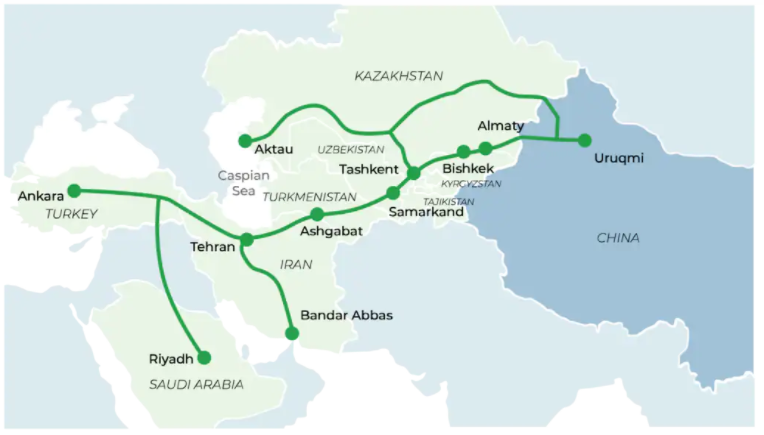
The
China-Central Asia-West Asia Economic Corridor (CCW) is a key part
of China's Belt and Road Initiative that aims to boost economic
development and connectivity through infrastructure projects linking
China to the Persian Gulf, Arabian Peninsula, and the Mediterranean.
It follows the route of the ancient Silk Road, connecting China with
countries like Kazakhstan, Kyrgyzstan, Uzbekistan, Tajikistan,
Turkmenistan, Iran, and Turkey through new rail, road, and energy
networks.
The
corridor's goal is to create an alternative to maritime transport,
streamline cross-border trade, and build a robust regional supply
chain for goods and energy.
Purpose: To improve infrastructure,
facilitate cross-border trade, and enhance economic cooperation
between China, Central Asia, and West Asia.
Geography: It extends from northwestern China through Central
Asia (including Kazakhstan, Kyrgyzstan, Uzbekistan, Tajikistan, and
Turkmenistan) to West Asia, connecting with Iran, Turkey, and the
Arabian Peninsula.
Key components: The corridor focuses on developing
transportation (rail and road) and energy infrastructure to create
seamless supply chains.
Economic impact: The corridor aims to increase trade, boost
regional economic growth, and provide a land-based alternative to
traditional sea routes for goods and energy.
Part of a larger initiative: The CCW was one of the initial
corridors outlined in the Belt and Road Initiative and has since
become a major component of the program.
Bangladesh-China-India-Myanmar Economic Corridor (BCIM)
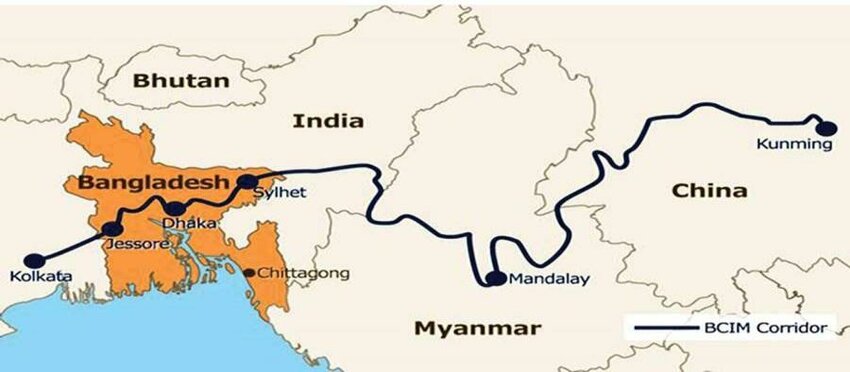
The
Bangladesh-China-India-Myanmar (BCIM) Economic Corridor is a
sub-regional cooperation project to improve economic integration and
connectivity through infrastructure, trade, and investment. It is
part of China's Belt and Road Initiative and aims to connect eastern
China with South and Southeast Asia, enhancing connectivity for
trade and development.
The
corridor would link cities in the four countries, including Kolkata,
Dhaka, Sylhet, Imphal, and Kunming, via a network of roads,
railways, waterways, and air routes.
Key
objectives
Physical connectivity:
To build a network of roads, railways, waterways, and airways
connecting the four countries.
Trade and investment: To facilitate the flow of goods,
services, and investment and reduce barriers to trade.
Economic development: To boost economic growth and
development through cooperation, especially in areas like
infrastructure, energy, agriculture, trade and industry.
People-to-people contact: To enhance cultural and social ties
between the peoples of the four nations.
Status: While the formal cooperation framework is in place,
implementation has faced challenges, including geopolitical issues
and differing national priorities, particularly from India.
India has been a hindrance not only for BRI co-operation, but also
an unreliable contributor to other global south oriented
multilateral organizations such as SCO and BRICS+ which India is a
founding member.
China-Indochina Peninsula Economic Corridor (CICPEC)

The
China-Indochina Peninsula Economic Corridor (CICPEC) is a strategic
economic project under China's Belt and Road Initiative designed to
connect southern China with Southeast Asian countries via a network
of roads, railways, and pipelines.
Its
main goals are to enhance connectivity, facilitate the flow of
trade, people, and capital, and stimulate economic cooperation and
development across the region. The corridor aims to link cities from
Nanning, China, to Singapore, passing through major urban centers
like Hanoi, Phnom Penh, and Bangkok.
Key aspects of CICPEC
Connectivity:
CICPEC creates a network of modern transportation infrastructure,
including highways and railways, to better connect China with
countries on the Indochina Peninsula.
Geographic scope: It links cities in southern China with
major Southeast Asian hubs such as Hanoi (Vietnam), Vientiane
(Laos), Phnom Penh (Cambodia), Bangkok (Thailand), Kuala Lumpur
(Malaysia), and Singapore.
Objectives: The project seeks to facilitate the flow of
people, goods, capital, and information, open up new opportunities
for strategic cooperation, and create a regional economy based on
complementary strengths.
Belt and
Road Initiative: The corridor is an integral
part of China's broader Belt and Road Initiative.
Development: Initial steps have included the construction of
high-speed rail lines in China, like the Nanning-Pingxiang line, as
a northern anchor for the corridor.
Broader goals: By fostering development and economic
integration, CICPEC is intended to help achieve common prosperity
and strengthen the China-ASEAN community.
China Vietnam Economic Corridor (CVEC)
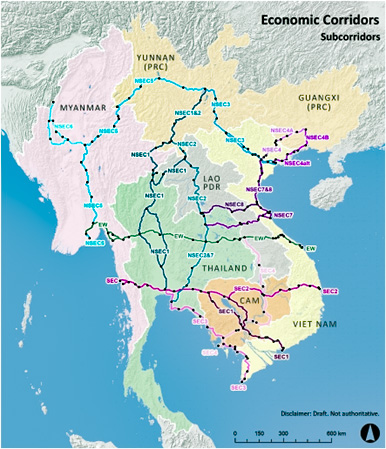
The
China Vietnam Economic Corridor (CVEC) is part of the larger
China-Indochina Peninsula Economic Corridor (CICPEC),
which is a project under China's Belt and Road Initiative to improve
connectivity and economic cooperation between China and its
Southeast Asian neighbours.
It
aims to facilitate the movement of people, goods, and capital by
linking cities in southern China with major cities in Southeast
Asia, including Hanoi in Vietnam, through a network of roads,
railways, and pipelines. The goal is to strengthen trade,
investment, and strategic cooperation between the countries
involved.
Key
aspects of the CVEC
Connectivity:
It focuses on improving and modernizing infrastructure, such as
railways and expressways, to better connect cities across the
region.
Trade facilitation: The corridor is designed to streamline
cross-border logistics and customs procedures, aiming to boost trade
flows and economic activity.
Regional economic integration: The project seeks to foster a
more integrated regional economy by leveraging the complementary
strengths of participating nations and promoting common prosperity.
Component of a larger initiative: The CVEC is an integral
part of the broader China-Indochina Peninsula Economic Corridor (CICPEC),
which in turn is a component of the Belt and Road Initiative.
The China-Africa Economic Corridor (CAEC)
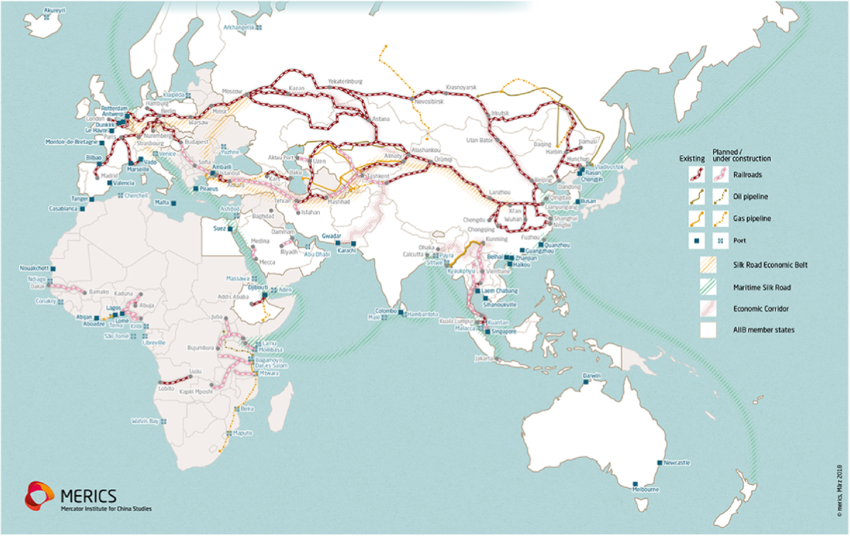
The
term "China-Africa Economic Corridor" (CAEC) is not a single,
official project like the China-Pakistan Economic Corridor (CPEC),
but rather a descriptive phrase for China's broader network of
infrastructure and development projects across the African
continent.
These projects are part of China's larger Belt and Road Initiative
and aim to boost economic growth, enhance trade connectivity, and
meet China's demand for resources.
They
include a wide range of activities, such as the construction of
roads, railways, ports, and power plants, as well as initiatives in
areas like poverty reduction, healthcare, agriculture, and digital
innovation.
Key
aspects of the China-Africa economic partnership
Infrastructure development:
A primary focus is on building critical infrastructure like roads,
railways, and ports to improve connectivity and facilitate trade and
resource transport.
Economic integration: China seeks to create mutually
beneficial partnerships, framed around the idea of "mutual benefit
and win-win," while also accessing resources like energy and raw
materials.
Project examples: Specific projects include rebuilding
national roads in Angola and the development of power plants.
Broader cooperation: Beyond physical infrastructure, China is
also involved in areas such as medical cooperation, poverty
reduction, agricultural development, and digital innovation, often
framed within a broader "Hunan model".
Strategic and economic goals: The initiative is motivated by
both China's economic and strategic interests, which include filling
infrastructure gaps in African nations and boosting economic growth
on the continent.
It is envisaged that the future BRI will not only just focus on
co-operations in socio-economic infrastructures construction and
connectivity – particularly with the global south, but also shared
development and advancement in science and technology, green ecology
and industries, and poverty alleviation.
China's Digital Silk Road (DSR)
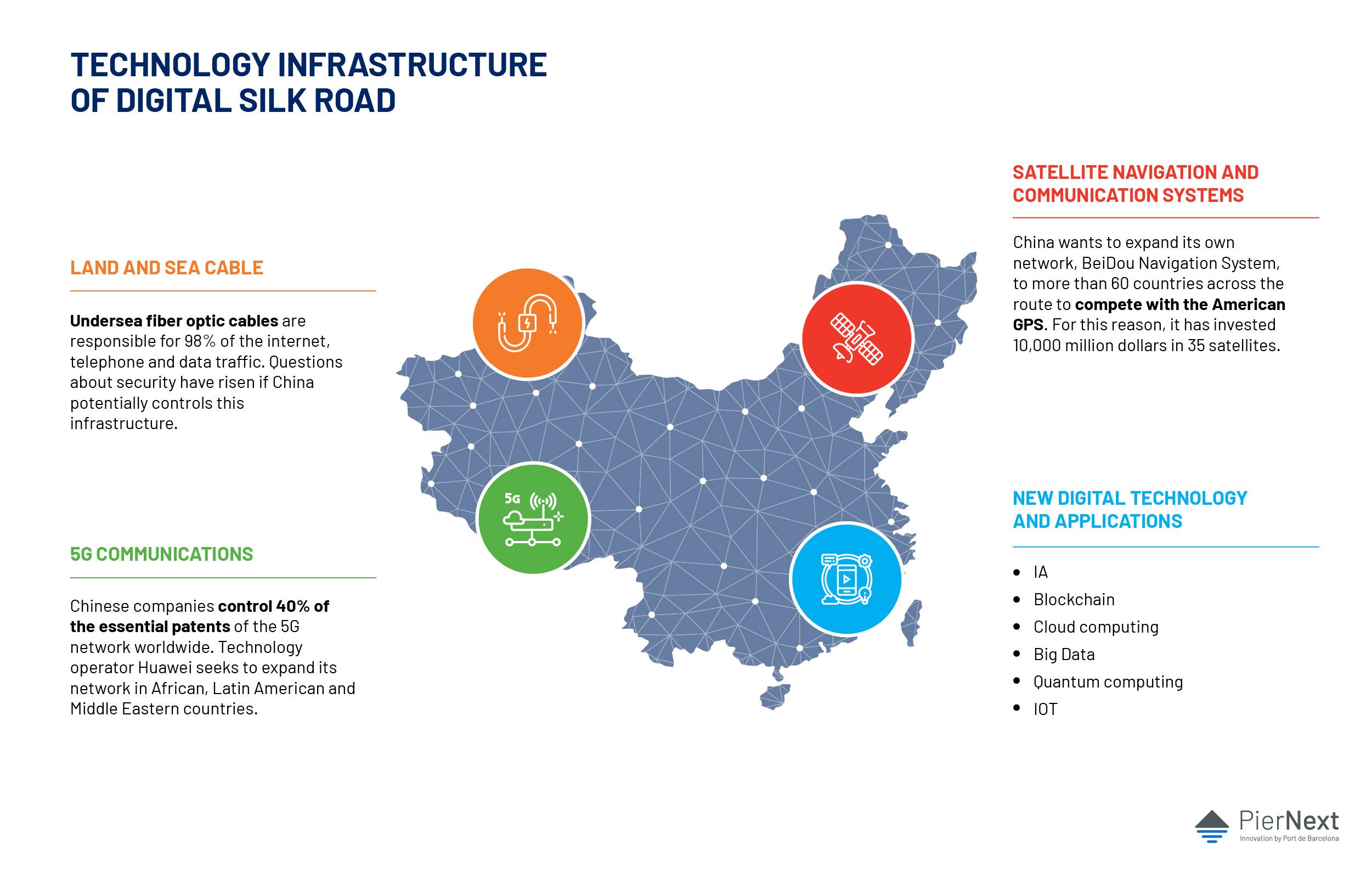
China'
Digital
Silk Road (DSR)s is the technology-focused component of the broader
Belt and Road Initiative, which involves funding, developing, and
sharing of advanced Chinese digital infrastructure and technologies
with other countries.
This
includes 5G networks, fibre optic cables, data centers, and smart
city initiatives, and it is intended to increase China's global
technological co-operation and influence, create digital trade
ecosystems, and provide digital infrastructure where private
companies have not. The initiative also encompasses emerging
technologies like e-commerce, artificial intelligence, and satellite
systems.
Key components and goals
Digital Infrastructure:
The DSR focuses on the physical infrastructure of the digital age,
such as 5G mobile networks, submarine and overland fibre optic
cables, and satellite communications.
Data Centers: A significant part of the initiative is the
construction of data centers, which support digital services and can
hold government data archives, explains
East Asia Forum.
Emerging Technologies: The DSR extends to other high-tech
areas, including artificial intelligence (AI), e-commerce platforms,
and quantum computing.
Smart Cities and Systems: China promotes the integration of
digital technology into urban infrastructure through "smart city"
projects and integrated security information systems.
International Digital Ecosystem: The DSR aims to build a
global digital ecosystem with China at its center, linking partner
countries more closely with its economy and technology.
Strategic implications
Economic Development:
By providing digital infrastructure, China helps partner countries
develop their digital economies, particularly in regions where
development has been slow.
Technological Influence: The initiative serves as a way to
increase Chinese technology co-operation, promote Chinese tech
companies, and gain a greater role in setting global digital
standards.
The Polar Silk Road

China's Polar Silk Road is its initiative to build an economic and
strategic corridor through the Arctic Ocean, extending its Belt and
Road Initiative (BRI) to the region.
It
aims to create new, shorter shipping routes between Asia and Europe
via passages like the
Northern Sea Route,
develop infrastructure, and access natural resources, which China
views as a way to boost trade and secure energy supplies.
Key aspects of the Arctic Silk Road
Expanded BRI:
The "Polar Silk Road" is a component of China's larger Belt and Road
Initiative, which originally focused on land and sea routes through
more traditional areas.
New shipping routes: As climate change melts Arctic ice, new
sea routes are becoming more viable, providing a shorter alternative
to traditional routes that go through the Suez Canal and the Strait
of Malacca.
Infrastructure and resources: The initiative involves
developing infrastructure in Arctic regions, including ports and
transport links, and securing access to the vast, untapped natural
resources of the Arctic.
Economic and strategic goals:
By creating a new trade corridor, China seeks to reduce
transportation costs and times, enhance its economic connectivity
with Europe, and secure vital energy supplies, potentially bypassing
strategic chokepoints.
Shipping from China to Europe via the Polar Silk Road takes
approximately 18 days, which is significantly faster than
other routes. The traditional Suez Canal route takes over 40 days,
and the route around the Cape of Good Hope can take over 50 days.
The Arctic route is also faster than the China-Europe rail line,
which takes around 25 days.
Military implications: In co-operation with Russia, the Polar
Silk Road also has a military component, aimed at protecting China's
growing overseas interests and ensuring national security by
establishing a new strategic artery.
